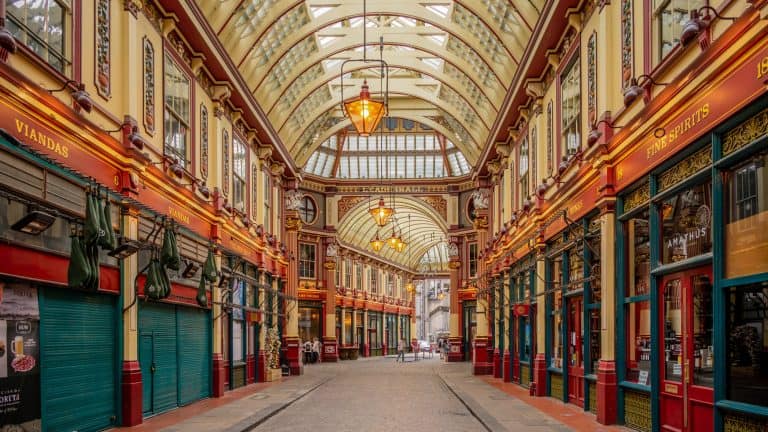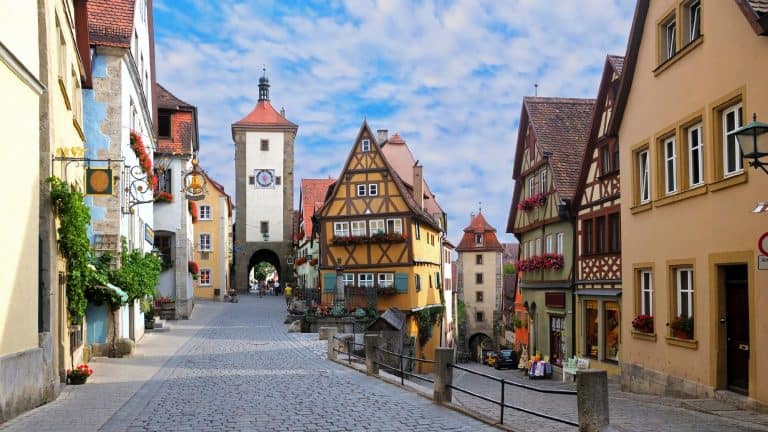Found By Accident contains affiliate links and is a member of the Amazon Services LLC Associates Program. If you make a purchase using one of the Amazon links (or other affiliate links), we may receive compensation at no extra cost to you. See our disclosure policy for more information.
14 Budget-Friendly European Cities That Offer Rich Experiences Without The Price Tag
Europe isn’t exactly known for going easy on your wallet… but it doesn’t have to shred it either. Pick your cities wisely, and suddenly you’re saving cash while collecting fond memories. Just imagine sipping coffee that doesn’t have a markup for being “scenic,” riding trams that cost less than a candy bar, and exploring museums that welcome your curiosity without punishing your budget.
The key? Dodging the usual tourist-trap capitals and aiming for places oozing with culture and personality. These cities still have historic streets and drool-worthy eats, but also that sweet, sweet sense of getting bang for your buck.
Your money isn’t just snagging you more stuff; it’s buying you more time to enjoy. These cities are proof that adventure doesn’t have to cost you an arm and a leg (and your soul). So whether you stick to one spot or turn this into the ultimate budget-friendly Euro trip, your bank account will thank you.
Krakow, Poland

Cobblestones, pierogi, and prices that actually play nice. Welcome to Krakow, where scoring a solid double room for $30–56 is completely normal. Seriously, hitting $40-ish (especially on weeknights) won’t even make you flinch.
Tack on budget-friendly days in the low $40s if you stick to casual meals and rely on the city’s user-friendly public transit. And speaking of, a 24-hour tram and bus pass costs 22 zloty (about $6.10 USD), shuttling you everywhere from Kazimierz to the castle with zero hassle. Want a little splurge without the guilt? Treat yourself to coffee and cake in Rynek Glowny (just maybe sidestep the amber souvenirs this round).
So what’s Krakow’s secret sauce for staying easy on the wallet? Crazy walkability, fierce competition among midrange accommodations, and a compact old town where every cobblestone doubles as a history lesson.
Sofia, Bulgaria
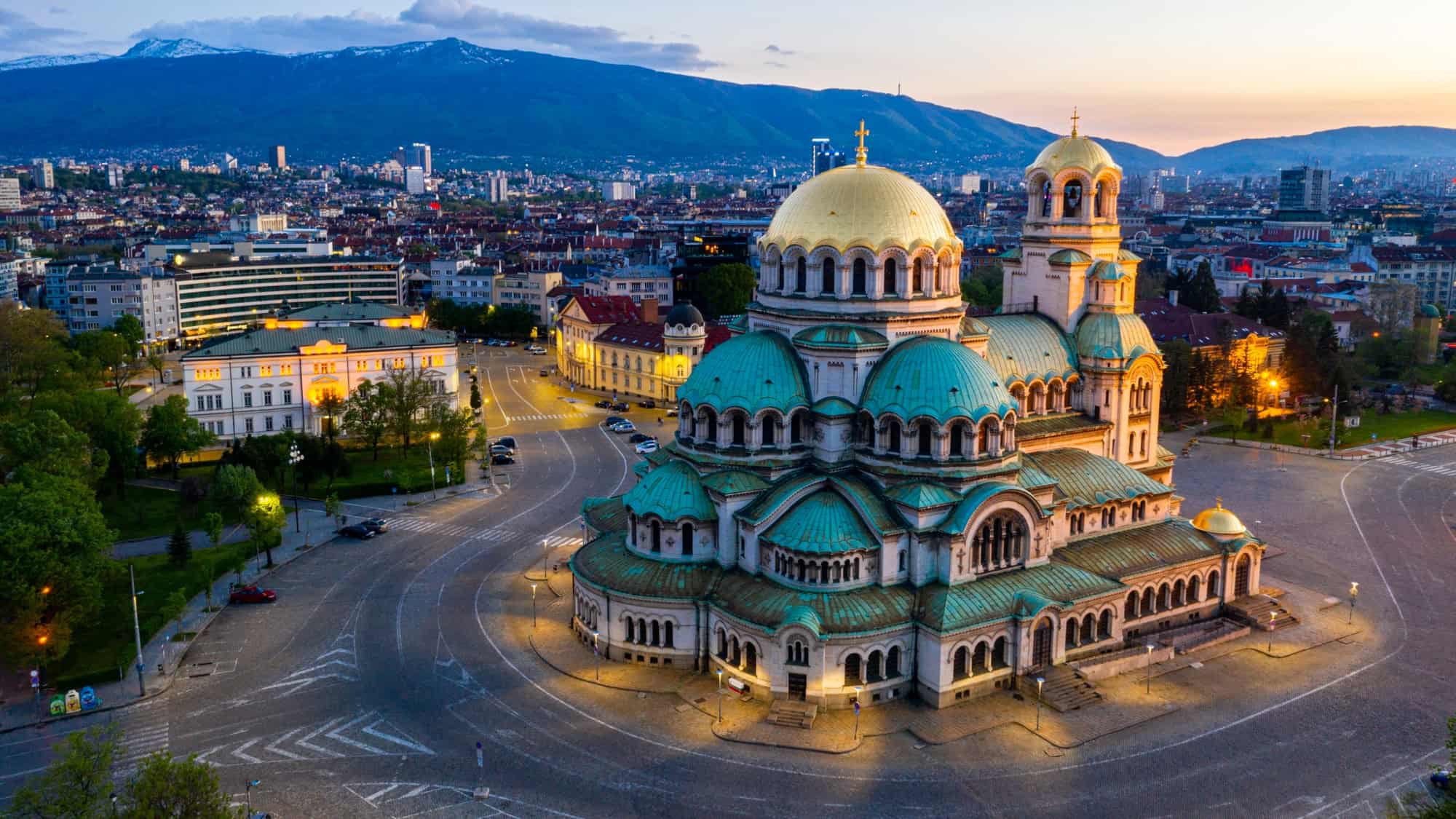
Strong coffee, tiny bills; that’s Sofia for you. Those central one-bedroom stays for €540–675 for an entire month? They translate to a chill $640–$800 USD. And local transit is just as wallet-friendly. A single metro ride costs 1.60 lev (about $0.97 USD), or grab a 24-hour pass for 6 lev (around $3.60 USD) to cover all your city-hopping needs.
More savings mean more banitsa, museums, or even a cable car ride up Vitosha Mountain, if the weather cooperates. And what keeps Sofia surprisingly affordable? A fixed lev-euro exchange rate that avoids eye-watering price spikes, plus budget-friendly transport systems capping your daily spend.
And don’t sleep on the visuals: Roman ruins under glass floors, yellow-brick streets, and parks alive with chess battles. Big-city mood, small-city costs. The hardest part here? Deciding between mekitsa (fried dough heaven) for breakfast or shopska salad for lunch.
Athens, Greece

Sun-drenched marble and receipts that won’t give you sticker shock? Yes, Athens is that good. Your daily budget? That €55–75 sweet spot converts to $65–$89 USD, with budget travelers reporting around $73 if you balance gyros with bakery stops and the ultra-cheap metro.
A 24-hour metro, bus, and tram pass costs just €4.10 (about $4.80 USD). And sure, the Acropolis entry clocks in at €30 ($35-ish) during peak season, but with those views, it’s impossible to feel ripped off. Just don’t forget water… shade is basically a myth up there.
Athens nails the value equation because it lets you eat like royalty for under $10 while cramming in ancient wonders within walking distance. Tip? Grab a five-day public transport pass if you’re here longer and watch the sunset from the tram at the coast. This is literally why you booked the trip.
Bucharest, Romania
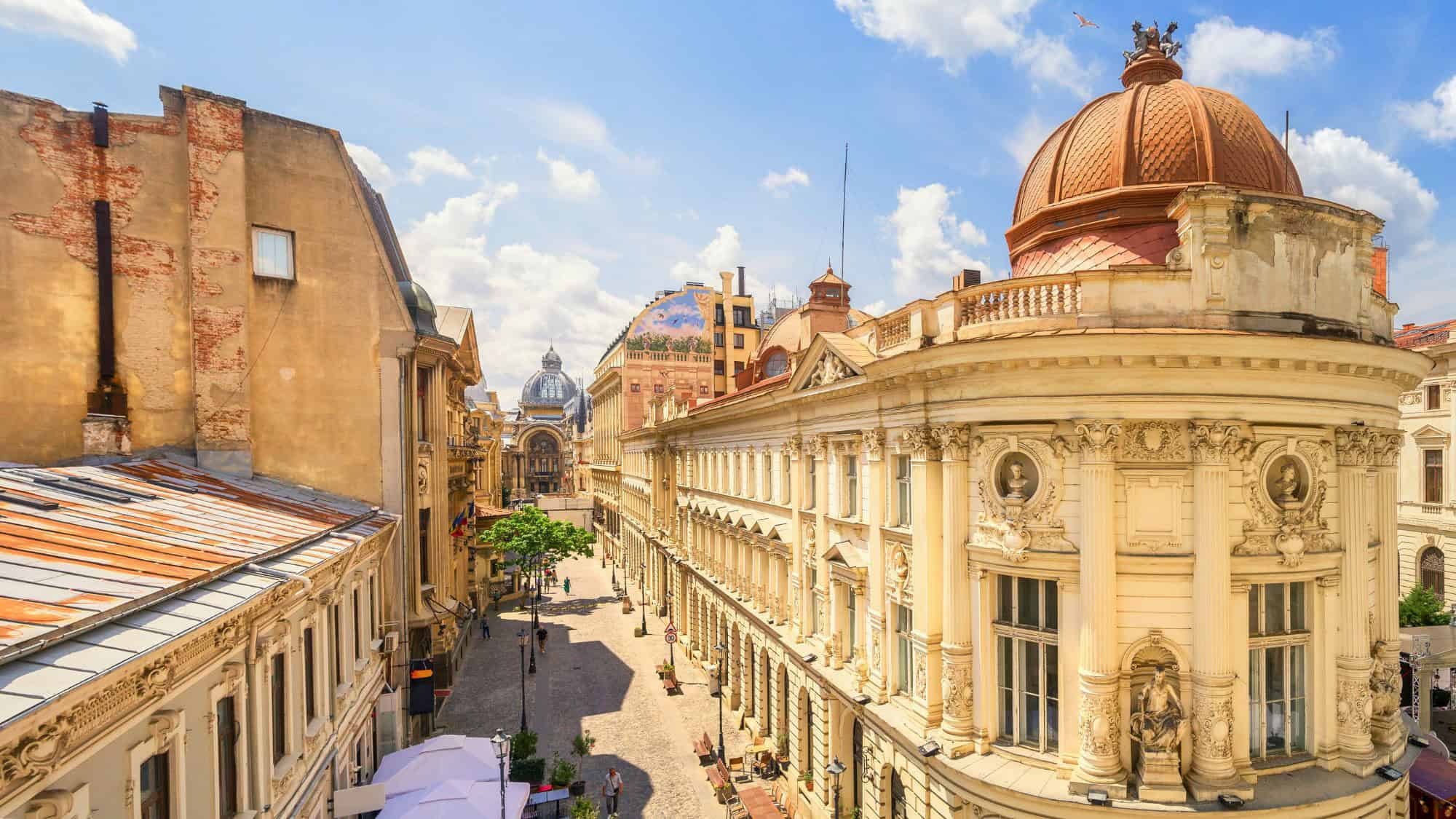
Bucharest is the city where budgets stretch like polenta. With historic courtyards and Art Deco backdrops, this city lands on every “Europe’s cheapest” list for a reason. Expect to spend around $40 USD a day if you go for hostels, transit, simple eats, and an affordable activity or two.
That’s not a typo. You can grab soups, mici (grilled meat), and hearty polenta dishes for the kind of prices that’ll make you wonder why you’re paying double elsewhere. And public transit keeps things lean, too, with metro trips barely denting your wallet.
Romania’s overall affordability ranks high in the EU, and it shows when you realize a neighborhood bistro meal costs about as much as a coffee elsewhere. Feeling fancy? Tour the colossal Palace of Parliament or sip on craft beer in the buzzing Old Town.
Lisbon, Portugal
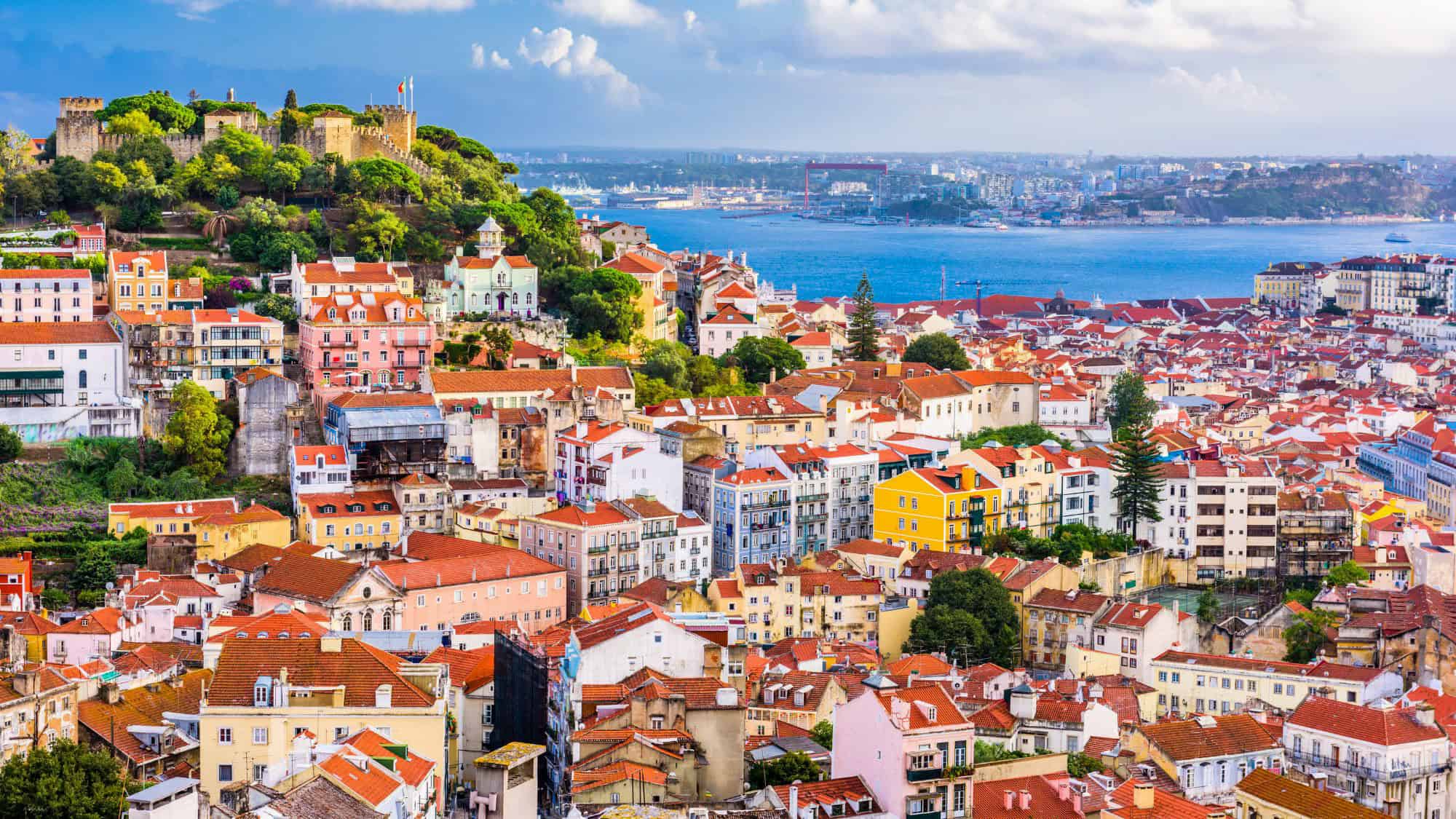
Tile-covered magic, but on a budget… kinda. Lisbon still ranks as one of Western Europe’s best value cities, and the €7 (about $8.25 USD) 24-hour Carris/Metro pass gets you unlimited access to buses, trams, funiculars, and the metro.
Go ahead, zigzag from Alfama to Belem like you own the place. The catch? Lodging. Housing demand has nudged hotel prices up, particularly in the bustling city center. But you can hack the system by staying just outside Baixa or Graca, then riding that trusty day pass back in.
Food, though? Still passes the “cheap but great” check. Fish dishes and local eats don’t make you flinch when the bill arrives. Plus, the city’s famous hills double as free lookouts, so snagging a sunset view is literally $0.
Bratislava, Slovakia

Vienna’s cooler, cheaper sibling, where your wallet gets more love. Average hotels in Bratislava? About $64 USD in low season. Turns out staying here costs a fraction of Vienna, and you’re just an hour away for a day trip.
The Bratislava Card, starting at €30 for 24 hours (roughly $35 USD), is your golden ticket to unlimited public transport and free or discounted museum entries. Translation? You pay once and basically unlock the city’s highlights.
Hungry? Skip the fancy riverside cafes and wander a block inland for a lunch that doesn’t hurt your budget. The city is compact, so walking is the thriftiest (and most scenic) way to explore. And if the weather turns, use your Bratislava Card to blend rainy day “meh” into gallery-hopping brilliance or check out the Primate’s Palace for some royalty.
Ljubljana, Slovenia
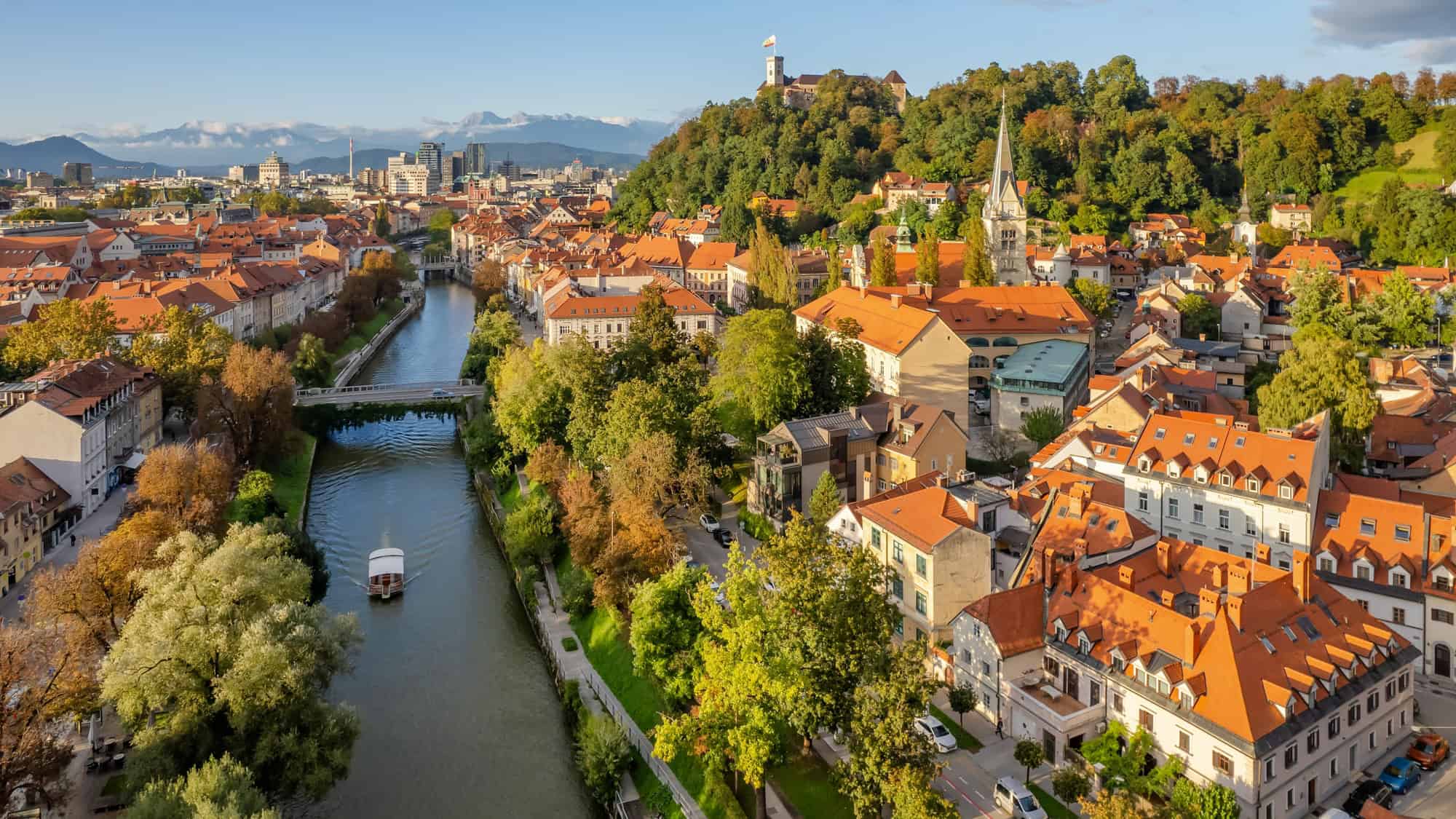
Storybook charm, realistic prices. Ljubljana isn’t the cheapest in the Balkans, but it’s the kind of place where your money works as hard as you do. A single bus ride is just €1.30 (around $1.53 USD) when you tap your Urbana card, though you’ll rarely need one since the city is as walkable as they come.
Most sightseeing action hugs the Ljubljanica River, so your biggest splurge may be museum tickets, but even those won’t break you. Breakfast? Pair a coffee with a pastry for under $5 USD (assuming you ditch the riverside tables and snag a spot a row or two back).
Plan wisely and you can castle-hop via funicular, snack your way through the market, and geek out over architect Joze Plecnik without blowing past your $60–$80 USD per day budget. This capital is half college town, half picturesque gallery, and 100% kind to your wallet. Shouldn’t more cities take notes?
Vilnius, Lithuania

Cheap? Check. Charming? Double check. Vilnius has earned its spot on value lists, clinching top honors in 2024 and a solid second in 2025 when analysts crunched the costs of weekend getaways for two.
Three-star hotel stays, sit-down dinners for under $15 USD, and transit tickets that barely scrape your loose change? Yep, this city gets it. And many of the biggest sights, like the Gate of Dawn or Uzupis, come with zero entry fees. When attractions do cost money, they won’t empty your pocket.
If you’re staying central, you won’t even need much transport since everything’s so walkable in the city. Want a budget-friendly thrill? Hike up Gediminas Hill for skyline snaps with a zero-dollar price tag. Who said second place wasn’t impressive?
Riga, Latvia

Think art nouveau charm, market-fresh snacks, and a full-blown city break that won’t make your wallet cry. Riga claimed the top spot on 2025’s value chart, thanks to hotel prices doing some delightful downward dancing and everyday costs staying refreshingly low.
Savvy travelers are breezing through with daily budgets in the $40s USD by mixing market bites, tram rides, and cozy guesthouses. The Central Market? A budget playground where a few coins score you rye bread and smoked fish for lunch. And the Old Town? Totally free to wander, with picture-perfect squares that could pass for movie sets. Honestly, it’s the kind of place where walking 15 minutes not only burns calories but saves you $15 USD.
Sure, the Baltic weather might nudge you onto a tram occasionally, but even those pocket-change rides fit right into your thriftiness. Glamorous? Maybe not like Paris, but it’s got its own understated charm, especially when you realize how much ground your dollars cover here versus some bloated West European capitals.
Prague, Czech Republic
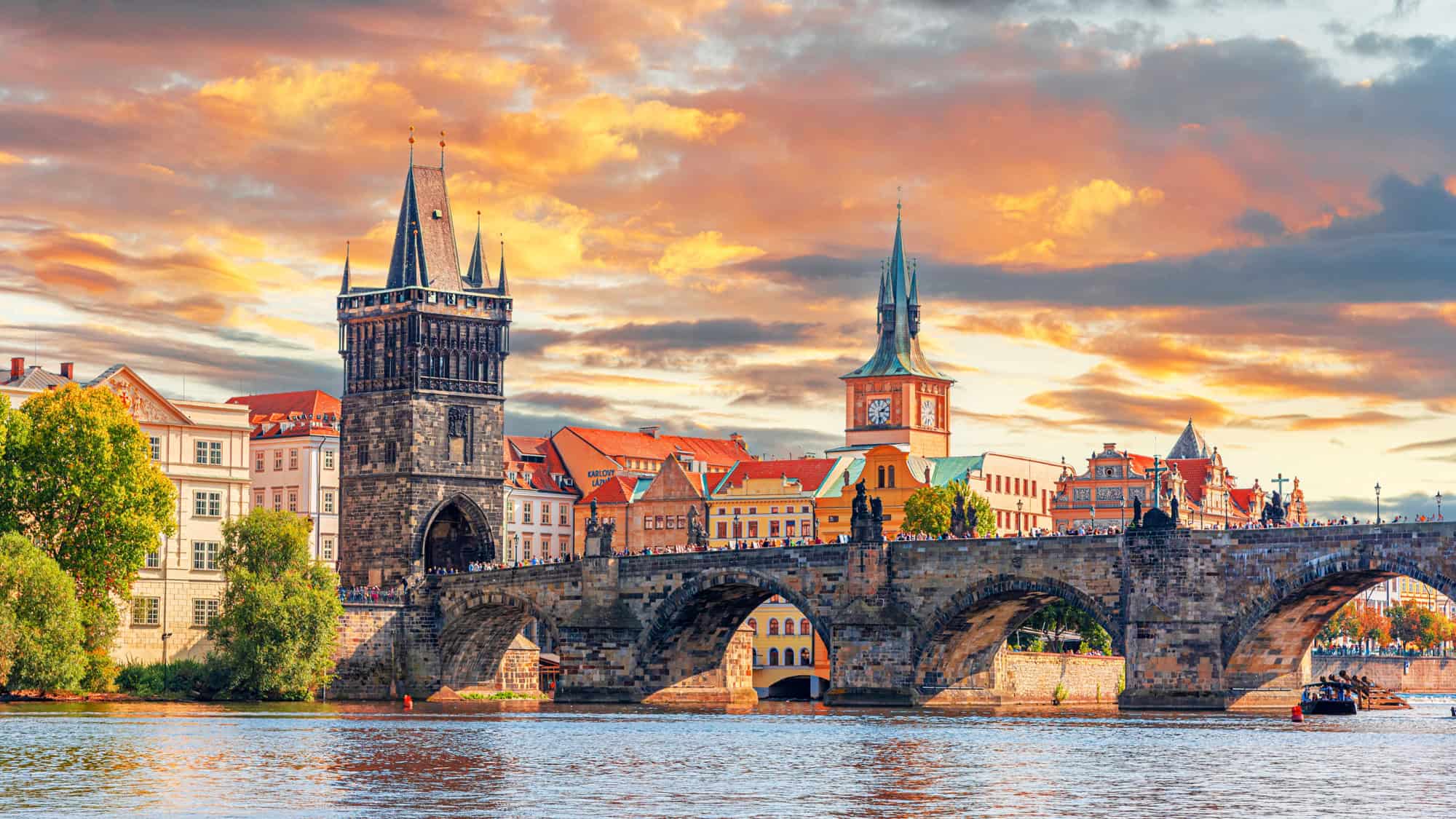
A spire-studded city with a sane price tag, that’s Prague in a nutshell. Budget-conscious explorers can keep daily costs around $60 USD with some clever swapping and a magic 24-hour transit ticket that costs just 120 CZK (approximately $5.85 USD).
That’s unlimited rides on all trams and metro, AKA your golden ticket to Mala Strana, the castle district, and the quirky vibes of Zizkov without breaking a sweat. Meals? Make lunch your star moment. It’s cheaper, the portions are hearty, and it lets you end your day with golden hour strolls along the Vltava.
Museum fees are modest, the beer halls give unbeatable value, and the real jackpot is stepping a few blocks off Charles Bridge to where prices start behaving normally. Prague isn’t the cheapest kid in class, but it might just be the brightest. The price-to-wow ratio here? Top-tier… especially if you steer clear of those peak summer weekends.
Belgrade, Serbia

Belgrade doesn’t do subtle. It’s bold, lively, and ridiculously good for your bank account. Average daily costs? Somewhere around $56 USD if you’re keeping it casual with hearty meals, public buses, and cozy hotels.
That budget buys riverfront sunsets at the Kalemegdan Fortress, dinner that’s basically an ode to grilled meat, and kafana nights that somehow manage to keep your spreadsheet intact. Public buses are dirt cheap, coffee culture is strong enough to fuel your sightseeing, and the city is walkable enough to ditch transport if you plant yourself near Knez Mihailova or Dorcol.
Fancy a splurge? A river cruise or a day trip to Novi Sad won’t bust your budget either. Belgrade feels like a “real” capital (jam-packed with all the good stuff), but with prices that scream “student town.”
Skopje, North Macedonia
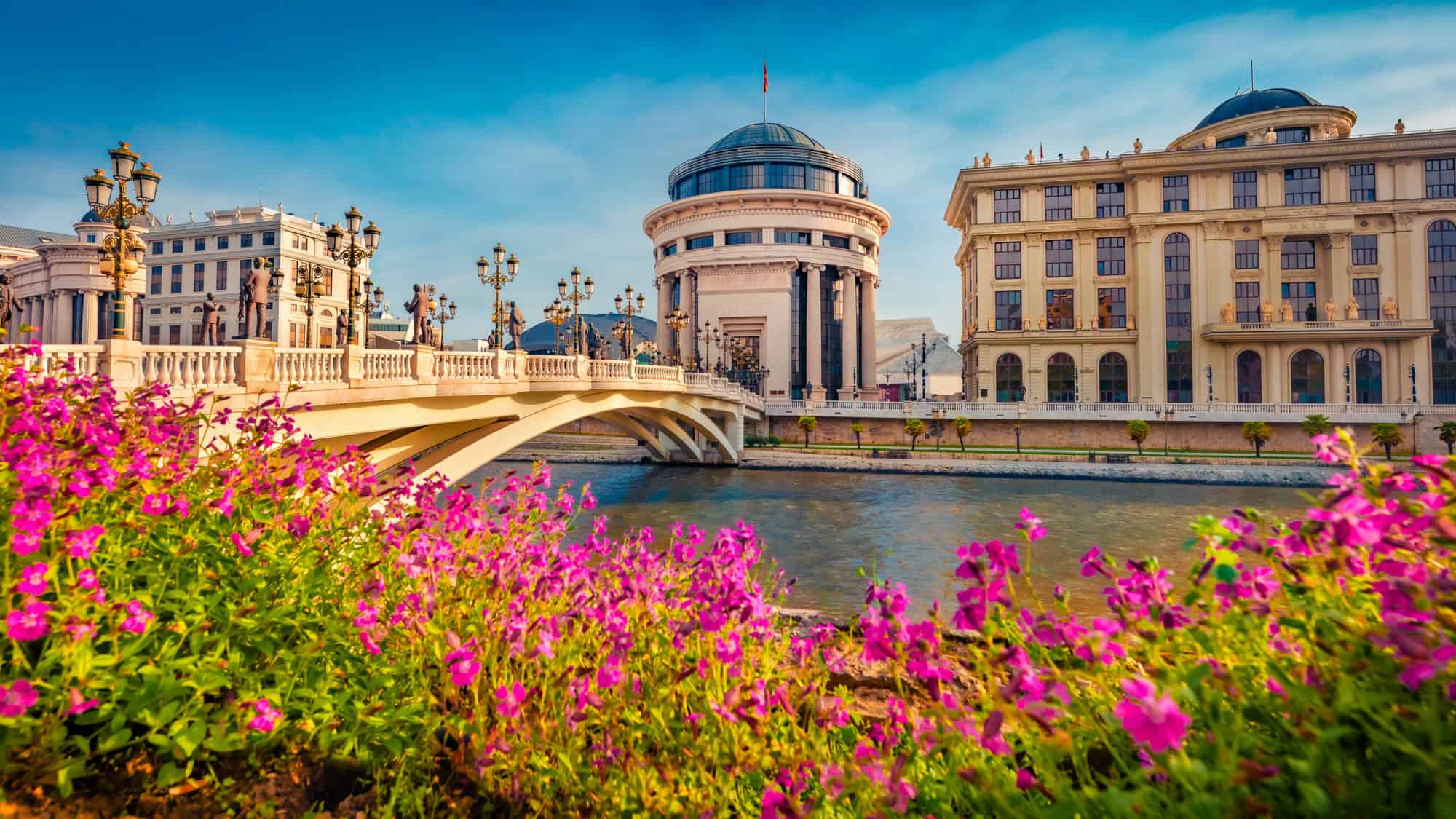
This city is Europe’s playground for people who hate wasting money. Skopje’s got sculptures around every corner, meals that could feed a small army, and prices so low you’ll think there’s a catch. But there’s no catch.
North Macedonia already sits at the budget-friendly end of Europe’s scale, and in Skopje, that translates to cheap stays, endless feasts at grill spots, and public transit that eats pennies instead of dollars. What does a typical day cost? Most visitors come in around the $35–$55 USD range (yes, even with taxis, a couple of market feasts, and a riverside coffee). It’s absurd, really.
The city center is so compact you can see more by walking than spending, the Old Bazaar serves up all the color and chaos you could want, and if you’re craving views, Millennium Cross delivers. Turns out, hiking up burns calories, not cash. Oh, and museum lovers? Stack up two or three visits in a day… you still won’t sniff the ticket prices of the big capitals.
Tirana, Albania
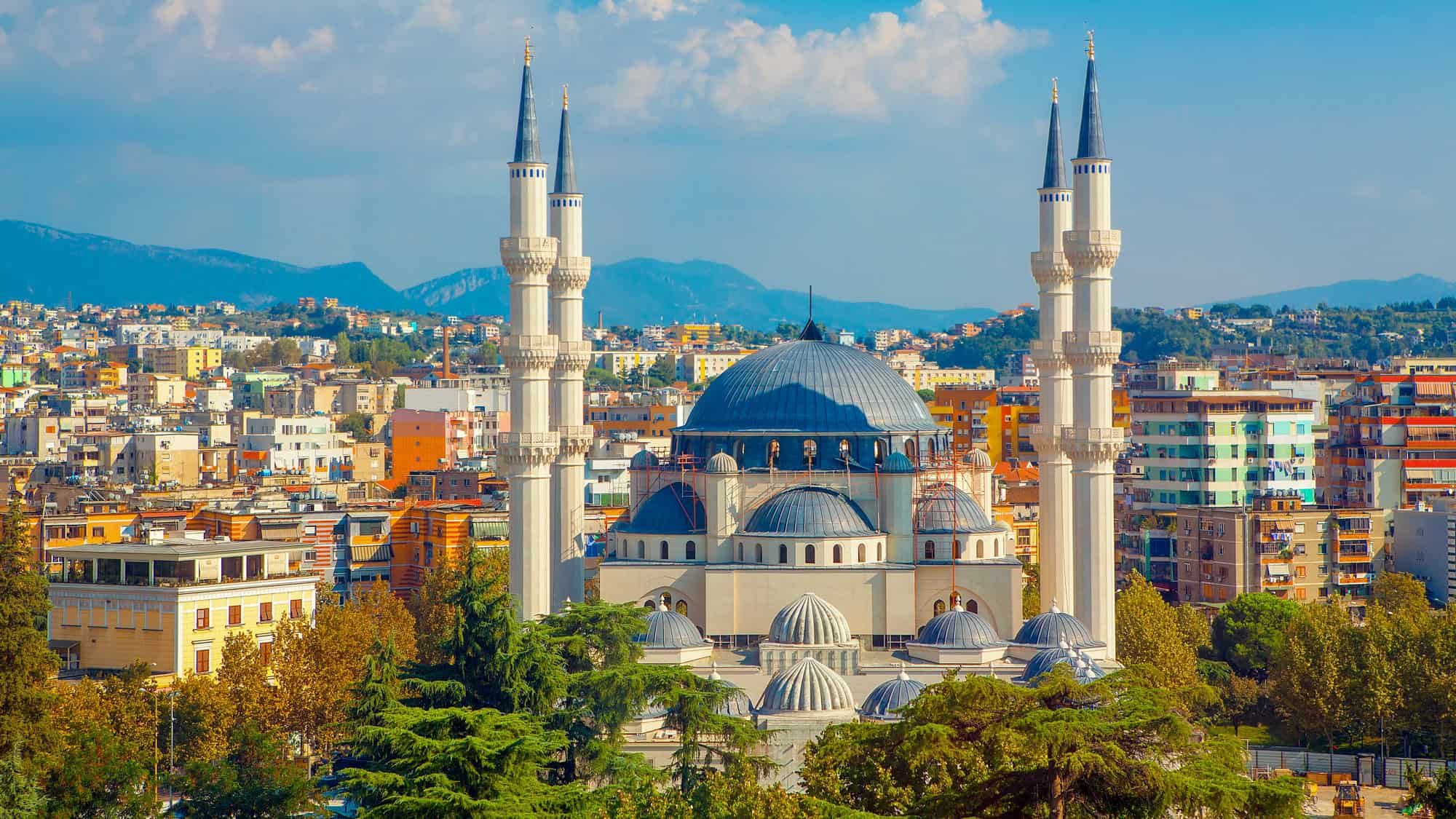
Pastel buildings, mountain views, and, yes, tiny tabs. Tirana’s like that friend who always insists, “You don’t need to spend much to have fun,” and she’s absolutely right. The city’s cost-of-living index is laughably low compared to Western capitals, which you’ll figure out after an espresso costs literal coins, a flaky byrek barely dings your wallet, and city buses set you back less than a dollar.
Plus, Tirana knows how to entertain. Go for a street art tour or wander the vibrant New Bazaar. Daily budgets? Most travelers land somewhere around $30–$50 USD, depending on whether you’re glamping it up or just chilling in hostel-style. Pro tip: beyond lodging, save even more by hitting big lunches instead of dinners and share a taxi when the buses disappear after dark.
Albania’s already got a rep as one of Europe’s cheapest gems, and Tirana lives up to that hype in every “look at what I just got for $5” kind of way. A weekend here feels stupidly luxe for the price.
Podgorica, Montenegro
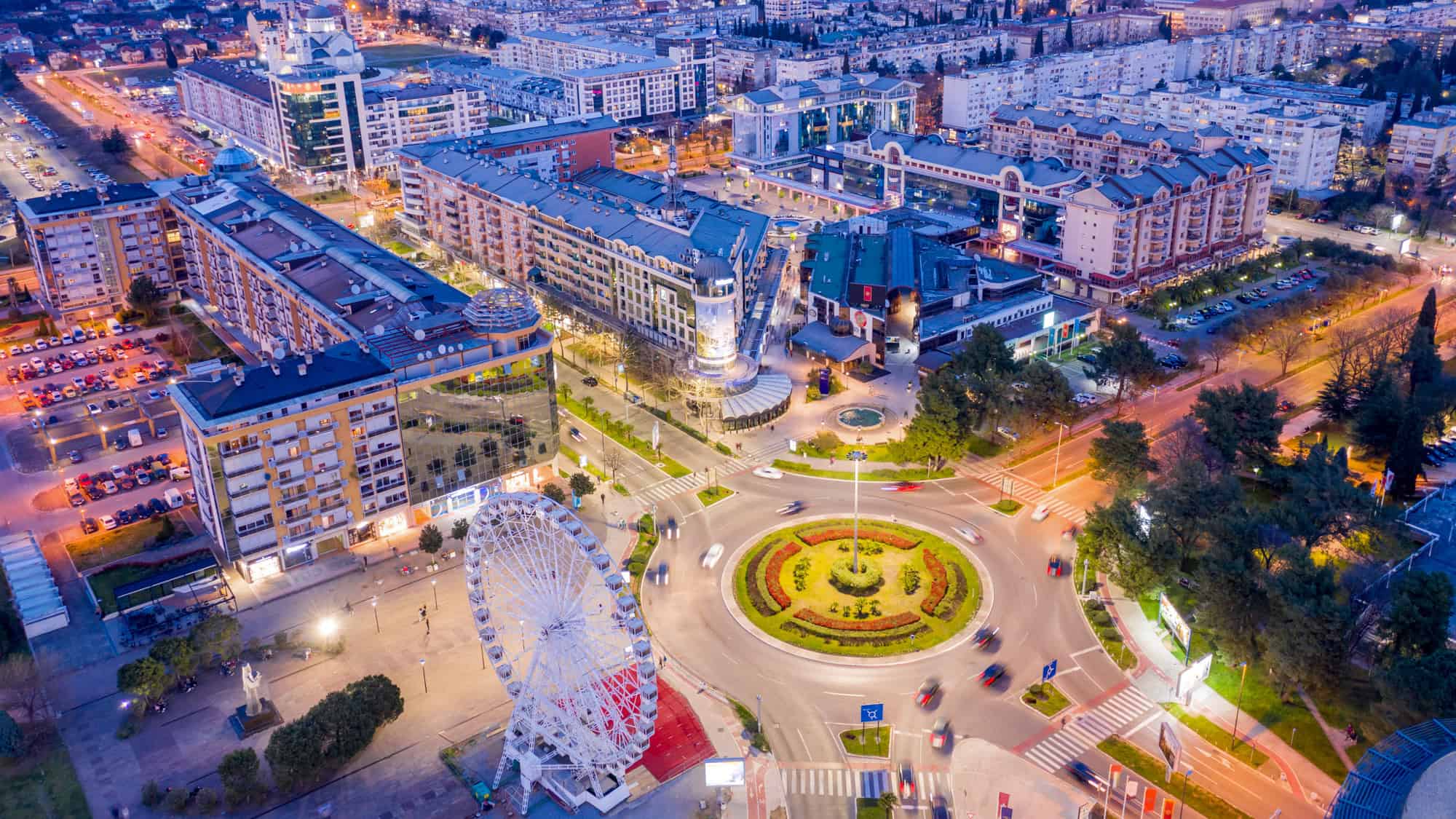
Underrated. Underpriced. And honestly, Podgorica might just be over everyone’s radar at this point because the value here is kind of bonkers. In 2025, it ranked in Europe’s top five for budget-friendly short trips. Analysts crunched the numbers on two nights, a 3-star stay, meals, drinks, travel, and a couple of attractions, and Podgorica left its more famous neighbors crying into their overpriced coffees. Daily prices? Around $75 USD per day.
This city’s secret sauce? It’s an ideal launch pad for day trips to places like Cetinje, stunning Skadar Lake, or the coast. You get all those “wow” moments without tourist-trap prices. And getting around is a breeze since transit is dirt cheap and walking is a joy.
Even that coffee you sip on Njegoseva feels like a win. Beach days calling your name? Sleep in Podgorica, train it to the coast, and save the cash you would’ve blown on coastal lodging for a killer dinner. Seriously, why pay premium rates for a waterfront bed when Podgorica’s math just makes more sense?
Like Our Content? Follow Us On MSN (or click the Follow Button above) to see more from Traveling In Focus.


